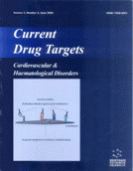Abstract
The peroxisome proliferator-activated receptors (PPARs) α, β/δ and γ are ligand-activated transcription factors belonging to the nuclear receptor superfamily. PPARs heterodimerize with the retinoid X receptor (RXR) and modulate the function of many target genes. They were originally described as regulators of various metabolic, pathways, but have been recently found to also exert modulating actions in the vascular wall. PPARα is activated by endogenous ligands, such as polyunsaturated fatty acids and by synthetic agonists such as the fibrates. PPARα is expressed mainly in the liver, kidney and skeletal muscle and is involved in fatty acid oxidation. However, it is also expressed in vascular cells such as the endothelial cells, vascular smooth muscle cells and macrophages, where it exerts anti-inflammatory and antioxidant effects. Since atherosclerosis is both a chronic inflammatory and a lipid disorder and since PPARα is expressed in vascular cells and regulates the expression of genes involved in lipid metabolism and inflammation, PPARα activators may constitute useful agents for the prevention of atherosclerosis, beyond their effects on lipid metabolism. This review will focus on the functions of PPARα on lipid metabolism, on vascular inflammation and its relationship to atherosclerosis. Furthermore, the currently available preclinical and clinical data on PPARα activators as well as their future perspectives will be discussed
Keywords: Peroxisome proliferator-activated receptor α, atherosclerosis, vascular smooth muscle cell, endothelial cell, monocyte, macrophage, T lymphocyte, cholesterol, triglyceride, fibrates
 4
4













